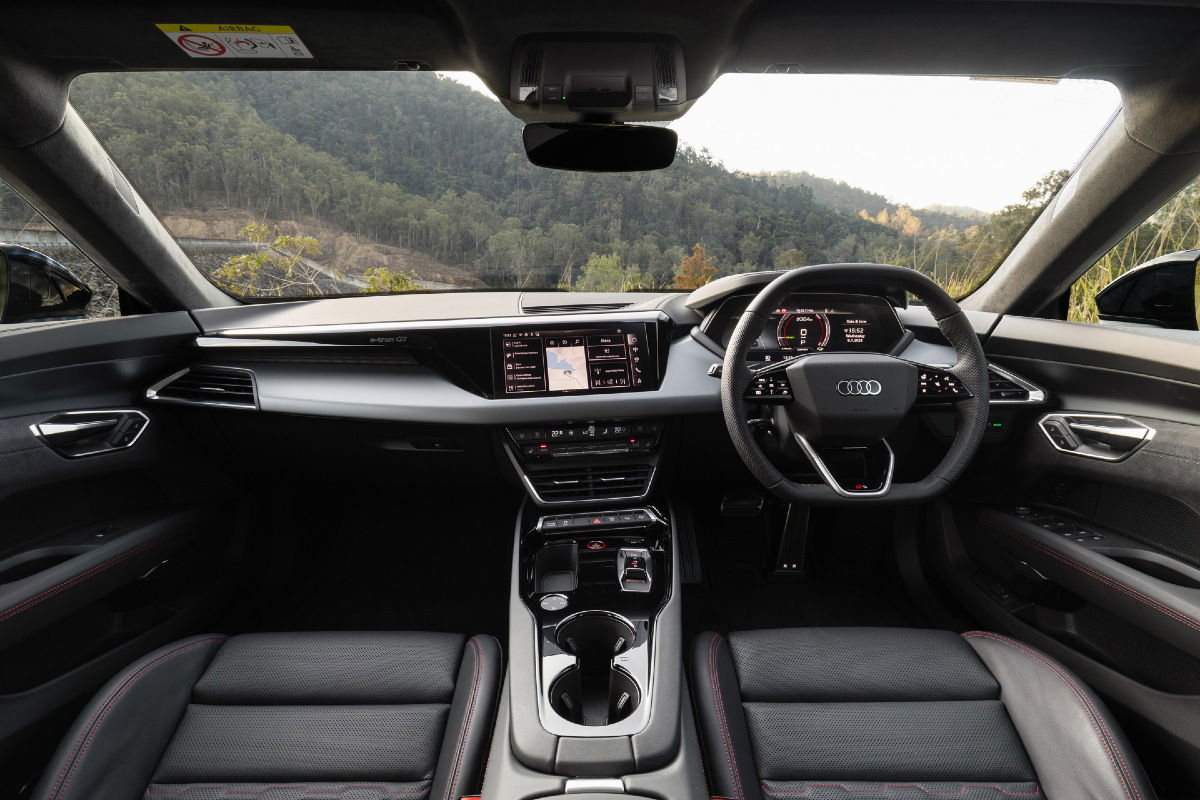
Audi knows what people want – more power.
Electric cars may have started as a way to try and save the planet, but the car industry soon worked out that electric motors can provide immense power and performance. Which is why we have cars like the Audi e-tron GT, the four-ring brand’s electric sports sedan (that shares much of its mechanical DNA with the Porsche Taycan).
The e-tron GT arrived back in 2023 as Audi’s new performance hero, effectively replacing the R8 supercar as the brand’s flagship as it ushered in what was meant to be a new age of electrification. Unfortunately for the brand, the electric transition is taking longer than originally thought, and EVs like the e-tron GT remain a fairly niche product.

So Audi has done what car makers have done for decades, given the e-tron GT a mid-life facelift and an upgrade. There isn’t actually much difference visually, but Audi has made some major changes to the electric motor.
The e-tron GT as we knew it is gone, replaced by a new ‘entry-level’ model, the S e-tron GT, which sits underneath the refreshed RS e-tron GT and the new RS e-tron GT Performance.
The RS e-tron GT Performance makes a whopping 680kW of power, which is 205kW more than the pre-facelifted RS e-tron GT, while torque is rated at 1027Nm. The upgraded RS e-tron GT, meanwhile, gets enhanced to make 630kW/865Nm.

The S e-tron GT, though, is so much more powerful than the model it replaces it actually earns a new name. The ‘S’ part is thanks to a boost from 350kW/630Nm from the original e-tron GT to now 500kW of power and 717Nm of torque. That’s enough for its 0-100km/h time to plummet from 4.1 seconds to just 3.4 seconds.
The S does miss out on some of the ‘big ticket’ items from the RS duo, namely the carbide (and optional ceramic) brakes and the active suspension. But it does come with adaptive air suspension and all-wheel steering, two key elements that make it so good to drive.
While the active suspension is brilliant, we’ll save that for our deep dive into the RS e-tron GT, even the adaptive air suspension set-up does a better job than most sporty EVs of finding a balance between body control and compliance.

But it’s the steering that really stands out, with it providing up to 2.8-degrees of rear-wheel steering in the same direction as the front wheels above 80km/h. This means the S e-tron GT isn’t just fast but also handles with precision and a responsiveness that few similar-sized sedans (electric or otherwise) can match.
This really does make the S e-tron GT feel like a car you buy because you enjoy driving it, because you enjoy the performance and the fact its electric is merely a bonus.
And it is still a very usable daily EV, despite its upgrade in power, with a claimed driving range of up to 558km between recharging sessions. This is thanks to an upgraded battery that has higher energy density, more size and faster charging, whilst also being 9kg lighter.

It’s also very livable thanks to its stylish interior, which lives up to Audi’s usual high standards of design and finish. There’s a nice modern touch, in keeping with the car’s ‘hi tech’ electric nature, but it isn’t radically different for the sake of it and fits neatly within the rest of the Audi range.
Given its rakish roofline, it’s not surprising the S e-tron GT isn’t the most spacious sports sedan in the back, with compromised headroom. But given family buyers are these days drawn to SUVs as a general rule and the e-tron GT is meant to be a ‘hero’ model, it’s understandable that Audi opted for style over practicality.
The new e-tron GT range begins at $209,900 for the S e-tron GT, steps up to $264,900 for the RS e-tron GT and hits its peak at $309,900 for the new RS e-tron GT Performance (all prices exclude on-road costs).










Discussion about this post